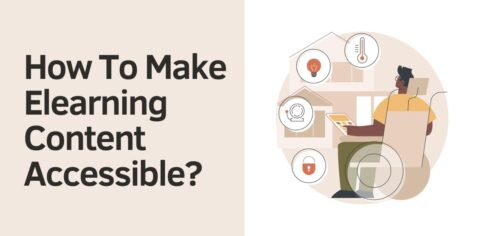In this digital age, e-learning is a critical way to learn. Ensuring e-learning accessibility for everyone is a rule and a step toward making the school system more open. This article will help ensure all your students can use e-learning tools and materials. With these tips, teachers and people who make content can give students situations that meet their wants and interests. This creates a place where everyone has the same chances and can share what they know.
How to Make E-Learning Easy to Use?
The Importance of Accessibility in E-Learning
Elearning accessibility is more than just following the rules. It’s what open education is all about. Many people should be able to get what they want from online classes. Students with disabilities can learn and grow in the same ways as other students with this method.
An important part of an inclusive educational system is ensuring everyone can learn and engage in a useful way. This is done by closing the gaps in how people can learn and participate.
Key Legal and Ethical Considerations
This is not only the right thing to do for e-learning but also the rule in many places. Laws and regulations must be known and followed by groups and teachers. These rules, like the Americans with Disabilities Act (ADA), say that training materials must be simple for disabled people.
Not caring for these legal problems can get you in trouble and hurt your reputation. Ensuring all kids have the same access to learning tools is the right thing to do.
Getting To Know The Different Disabilities And Needs
It’s important to know about the challenges of making e-learning materials available. People in this group have trouble seeing, hearing, thinking, or moving. There are other ways that each type of e-learning needs to be set up.
For instance, students who are blind or have low vision need content that works with screen readers. Students who are deaf or hard of hearing, on the other hand, can benefit from movies with closed captions. To make e-learning tools that are truly open, the first thing that needs to be done is to understand these different needs.
Implementing Accessibility in E-Learning Design
It takes careful planning and execution to make e-learning materials available. This process has several important steps:
Use of Accessible Templates: The best e-learning methods are the ones that are simple for everyone to use. Check to see if they work well with tools that help, like screen readers.
Text and Visuals: Choose fonts that are big and easy to read, and use colors that stand out a lot. Give images and pictures of other words to use.
Audio and Video: Place text and closed comments on top of movies and music. Make sure that you can get to all of the video’s features.
Interactive Elements: It is important that engaging parts like chores and questions can be used with assistive tools and can be reached by typing.
Testing for Accessibility: Many times, use different help tools to test your work and ensure it’s easy to use.
Advancing Accessibility in E-Learning Environments
Making a place to learn where everyone feels welcome is an ongoing process. Remember these four important things:
Continuous Learning and Improvement
Keep up with the newest tools and e-learning trends to ensure you can use them. You should go to training, talks, and classes. If you can keep learning, you can deal with new problems and add new ideas to your e-learning tools.
Collaboration and Feedback
Do your work with people who understand disabilities well, and ask students who have disabilities for their thoughts. Finding new ideas and better ways to do things is possible when you work with others.
Technological Advances
Get more people to use e-learning by giving them new tools. Advanced screen readers, AI-driven graphics, and live voice response systems are new tools you should check out. These tools can help disabled people learn in a better way.
Strategies for Continuous Improvement in E-Learning Accessibility
To keep and improve e-learning equality, people need to take the lead.
Regular Audits and Updates
Check your e-learning materials often to ensure they still meet accessibility standards if you need to change or add to things to fill in the gaps. People can still find and use your work as long as you keep an eye on it all the time.
Leveraging User Feedback
Get feedback from real users, people who can’t do anything. This feedback helps a lot to figure out how to make things better. It will help you make your online lessons better and more useful for everyone.
Last Words
The process of making e-learning materials available is ongoing and has many parts. To do this, you need to know about different needs, use technology, plan carefully, and always encourage people to try to improve. These tips can help teachers and people who make e-learning materials make sure they are tools everyone can use. Do not forget that making e-learning available is not a one-time thing; it’s a pledge to make education more available to everyone all the time.

Comments